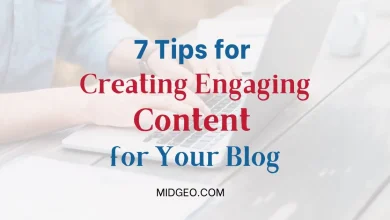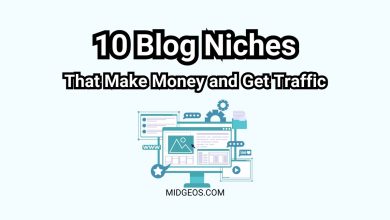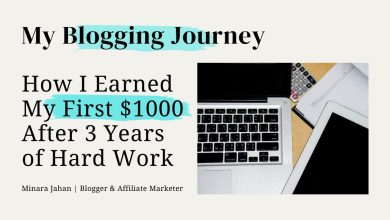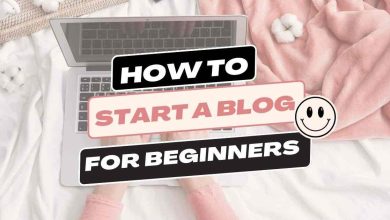How to Write Your First Blog Post: 10 Steps for Beginners in 2025
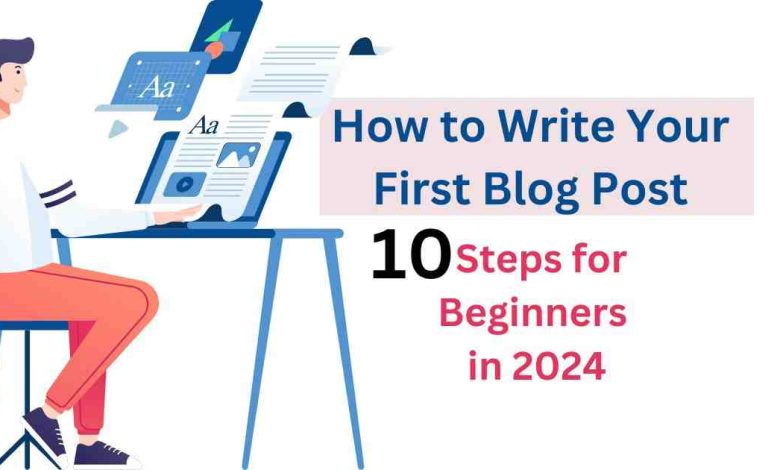
How to Write Your First Blog Post for Beginners in 2025 – This step-by-step Guide help you out. Starting a blog in 2025 is an exciting endeavor, but as a beginner, you might be wondering how to plan your first blog post effectively.
The Importance of a First Blog Post
Starting a blog is an exciting journey. Your first blog post sets the stage for everything that follows.
It’s your opportunity to make a strong first impression, connect with your audience, and establish your online presence.
Let’s delve into more detail on each of the 10 steps to help you get started:
Setting the Stage for Blogging Success
Your first blog post is more than just words on a screen; it’s the foundation of your blogging adventure. To help you create a remarkable first post, we’ve put together this comprehensive guide with 10 essential tips for beginners.
How to Write Your First Blog Post 10 Steps for Beginners
I. Understanding Your Audience
A. Identifying Your Target Audience
Before you start typing, it’s crucial to know who you’re writing for. Identify your target audience, and understand their needs, preferences, and pain points. This knowledge will help you tailor your content to resonate with them.
B. Creating Personas for Better Engagement
To connect on a deeper level, consider creating audience personas. These are fictional representations of your ideal readers, complete with demographics, interests, and goals. Personas can guide your content creation and make your posts more relatable.
II. Choosing a Niche and Topic
A. Finding Your Passion
Passion fuels great blogging. Choose a niche and topic that genuinely interest you. Blogging about something you love will keep you motivated and inspire your readers.
B. Researching Trending Topics
While passion is important, you also need to consider the demand. Research trending topics using (Google Trends Free) in your niche and stay updated on industry developments to ensure your content remains relevant.
C. Niche Selection: A Delicate Balance
Strike a balance between your passion and what’s popular. The sweet spot is a niche where you can express your enthusiasm while addressing topics that people want to read about.
III. Planning Your Content
A. The Power of an Editorial Calendar
Organize your blogging schedule with an editorial calendar. Plan your posts in advance to maintain consistency and avoid last-minute rushes.
B. Organizing Your Ideas
Jot down your ideas as they come to you. This way, you’ll always have a pool of topics to choose from when you’re ready to write.
C. Setting Clear Objectives
Define your blogging goals. Do you want to inform, entertain, inspire, or educate your readers? Having a clear purpose will guide your content creation.
IV. Planning Captivating Headlines
A. Writing Attention-Grabbing Titles
Your headline is the first thing readers see. Craft attention-grabbing titles that spark curiosity and encourage readers to delve into your post.
B. Utilizing Keywords for SEO
Incorporate relevant keywords in your headlines for Search Engine Optimization (SEO). This helps your blog posts appear in search results and attract organic traffic.
V. Writing Engaging Content
A. The Art of Storytelling
Engage your readers with storytelling. Narratives add depth and authenticity to your blog, making it more relatable.
B. Structuring Your Blog Post
Structure your post with an introduction, body, and conclusion. Use paragraphs, bullet points, and lists for better readability.
C. Hooking Your Readers in the First Paragraph
The first paragraph should be a captivating introduction to your topic. It sets the tone for the entire post and convinces readers to keep reading.
VI. Mastering Blog Post Formatting
A. Paragraph Length and White Space
Break up long paragraphs into shorter ones, and use white space to make your content more digestible.
B. The Role of Subheadings
Subheadings divide your post into sections, making it easier for readers to skim and find the information they’re looking for.
C. Incorporating Multimedia
Visual content such as images, videos, and infographics can enhance your blog post’s appeal and help convey your message effectively.
VII. Optimizing for SEO
A. Keyword Research
Use keyword research tools to find relevant keywords for your niche. Incorporate them naturally throughout your content to improve your blog’s visibility on search engines. Lots of free and paid tools are available online.
B. On-Page SEO Techniques
In addition to keywords, optimize your content for SEO by improving page load times, using meta tags, and ensuring mobile-friendliness. ( If you using WordPress then RankMath and Yeast SEO Plugins are best for you to ensure your SEO score.)
C. Meta Descriptions and Alt Text
Write compelling meta descriptions and provide alt text for images to further enhance your SEO efforts.
VIII. Editing and Proofreading
A. Self-Editing Tips
Edit your content for grammar, spelling, and clarity. Read it aloud to catch errors that you might miss when proofreading silently.
B. Seeking External Feedback
Have a trusted friend or colleague review your post. Fresh eyes can offer valuable suggestions for improvement.
C. The Importance of Grammar and Spelling
Poor grammar and spelling mistakes can deter readers. Use grammar-checking tools (like Grammarly it’s Free to use and also has a paid version) and proofread meticulously to maintain professionalism.
IX. Adding Value with Visuals
A. Creating Original Images
Original images personalize your content and make your blog unique. If you’re not a photographer, consider hiring one or using stock photos.
I personally use:
- Canva (for image and editing)
- Pixabay
- Unsplash
B. Sourcing High-Quality Stock Photos
High-quality stock photos can enhance your blog’s visual appeal. Use reputable sources to find free or paid images.

C. Using Infographics and Charts
Infographics and charts can simplify complex information and make it easier for readers to understand your message.
How Long Should My First Blog Post Be?
You may now be thinking “How Long Should My First Blog Post Be?” The length of your first blog post can vary depending on your specific content and goals, but typically, it’s a good idea to aim for a minimum of 300-500 words.
This length allows you to provide enough information to engage your readers and convey your message effectively.
Writing Your First Blog Post Template
[H1] Title: 2-5 sentences
[80-100 words]
Start with a compelling introduction that grabs the reader’s attention and briefly explains what your blog post is about. You can use a surprising fact, a thought-provoking question, or a personal anecdote to engage your audience.
Body:
[300-500 words]
Divide the body of your blog post into sections or paragraphs. Each section should cover a specific point related to your topic. Provide information, insights, or tips that are valuable to your readers. Use subheadings to break up the text and make it more scannable.
[H2] Section 1: [Insert Topic]
[Explain the first aspect of your topic. Provide details, examples, or evidence to support your points.]
[H3] Section 2: [Insert Topic]
Continue with the second aspect of your topic. Offer insights, solutions, or recommendations.
[H3] Section 3: [Insert Topic]
Move on to the third aspect of your topic. Share personal experiences or stories if relevant.
Conclusion:
[80-100 words]
Summarize the key points you’ve discussed in your blog post. Reinforce the main takeaways and provide a sense of closure. Encourage readers to take action or share their thoughts.
Call to Action:
[30-50 words]
End your blog post with a clear call to action. This could be an invitation for readers to leave comments, subscribe to your blog, follow you on social media, or explore related articles on your site.
Closing:
[Express gratitude]
Thank your readers for their time and interest. Sign off with a personal touch, like your name or a signature phrase.
X. Promoting Your Blog Post
A. Leveraging Social Media
Share your blog post on social media platforms to increase its reach and engage with your audience. (It’s steps many of them skip but it’s the part that turns their passions into sources of passive income.)
B. Email Marketing Strategies
Build an email subscriber list to directly reach your readers with your latest content and updates. I haven’t a lot of ideas about Email Marketing So can not help.
C. Guest Blogging and Backlinks
Collaborate with other bloggers by guest posting on their blogs and seeking backlinks to your own content. This can boost your blog’s credibility and traffic.
Engaging with Your Audience
How to Write Your First Blog Post? Here are some more steps you can follow:
A. Responding to Comments
Engage with your readers by responding to comments on your blog. Encourage discussions and build a sense of community.
B. Building an Email Subscriber List
Nurture your email subscriber list with regular updates and exclusive content to maintain a loyal readership.
C. Analyzing User Metrics
Use analytics tools to track user metrics. These insights can help you understand your audience better and fine-tune your content strategy.
Monetizing Your Blog
Hay! Write 10-20 blog posts that have audiences now time to turn your blog into a Money Machine.
A. Exploring Different Monetization Options
Consider various monetization options such as ads, affiliate marketing, selling digital products, or offering services.
B. The Role of Affiliate Marketing
Affiliate marketing involves promoting products or services and earning a commission for each sale made through your referral.
C. Sponsored Content and Advertisements
Collaborate with brands and businesses for sponsored content or incorporate advertisements to generate income.
Staying Consistent
Now time to stay motivated. It’s a journey from 0 to Hero.
A. Developing a Posting Schedule
Consistency is key in blogging. Develop a posting schedule and stick to it to keep your readers engaged.
B. Tracking Progress and Making Adjustments
Regularly assess your blogging journey. Analyze what’s working and what’s not, and be open to making adjustments as necessary.
My First Blog Post Example
- 120 Best Christmas Blog Post Ideas for Every Niche
- My Blogging Journey: How I Earned My First $1000 After 3 Years of Hard Work
- Fall Tech Wishlist: Blogger Favorites for 2025 – Must-Have Gadgets to Power Your Autumn Life
- 120 Fall Blog Post Ideas (2025): Drive Seasonal Traffic with Engaging & Evergreen Topics
- 120 Awesome Summer Blog Post Ideas for All Niches
Your first blog post is a stepping stone in your blogging journey. As you gain experience, your writing style will evolve, and you’ll develop a deeper connection with your audience. How to Write Your First Blog Post? Follow 10 Tips for Beginners 2025
Continue to write, engage, and refine your approach, and watch your blog grow in 2025 and beyond. Good luck!

